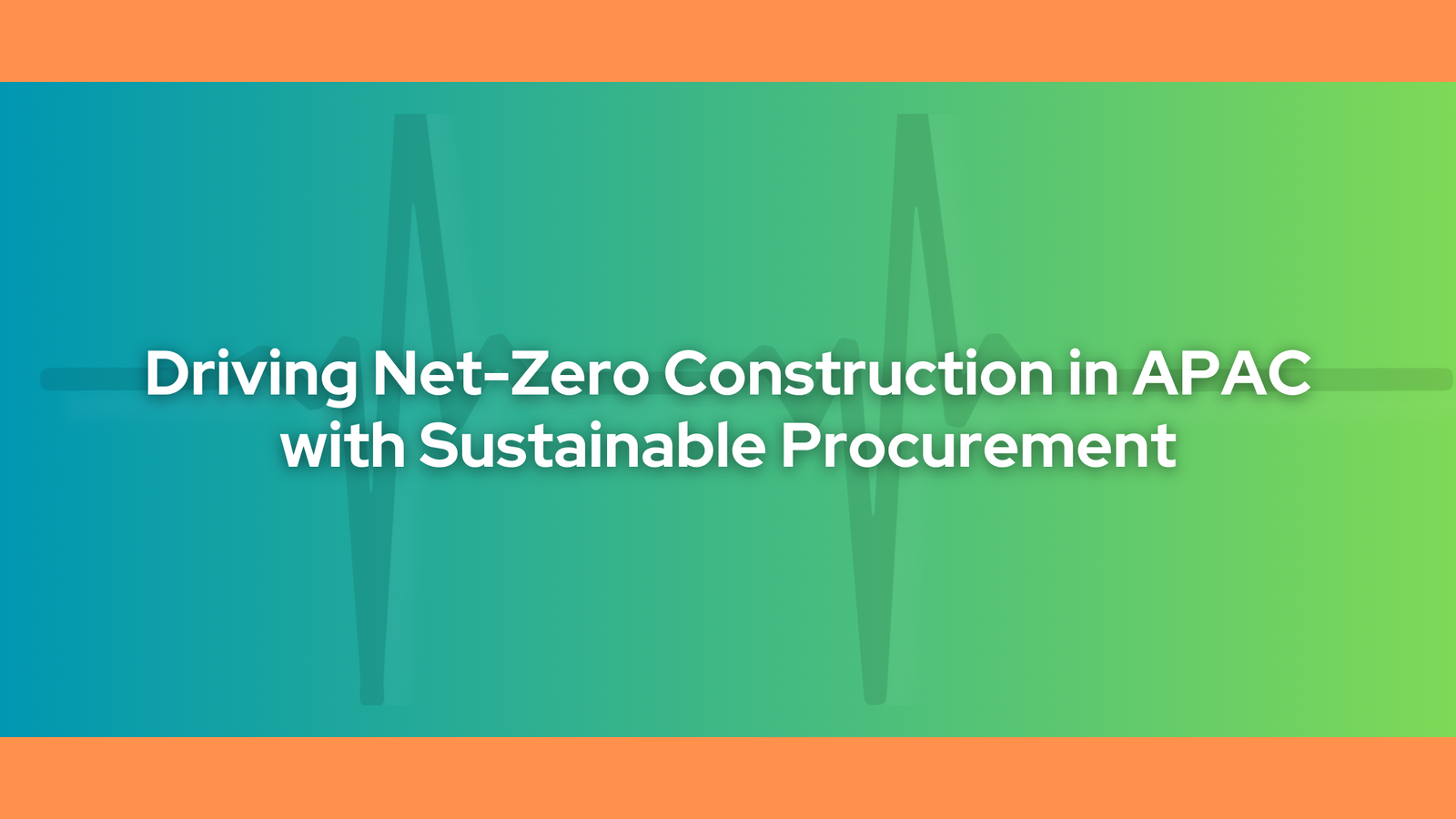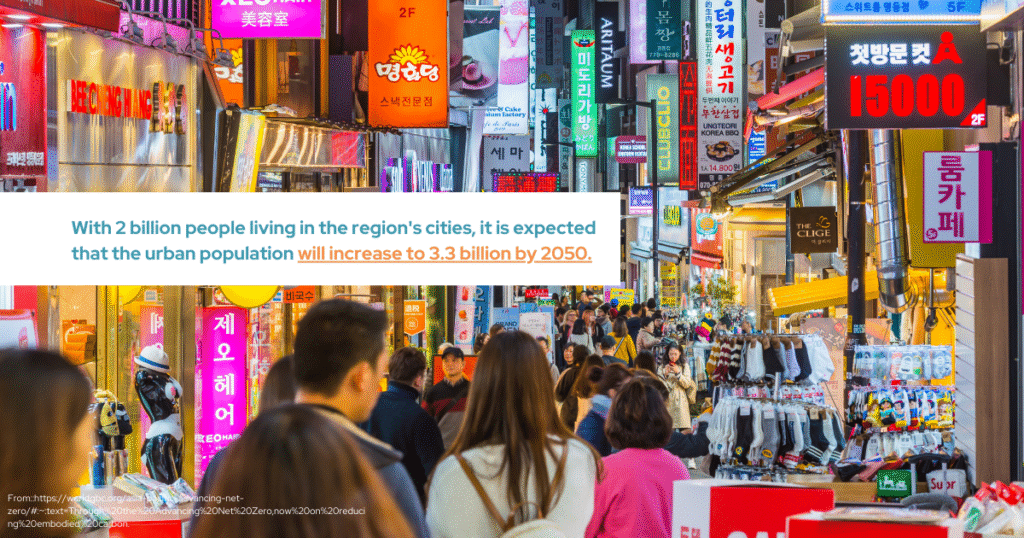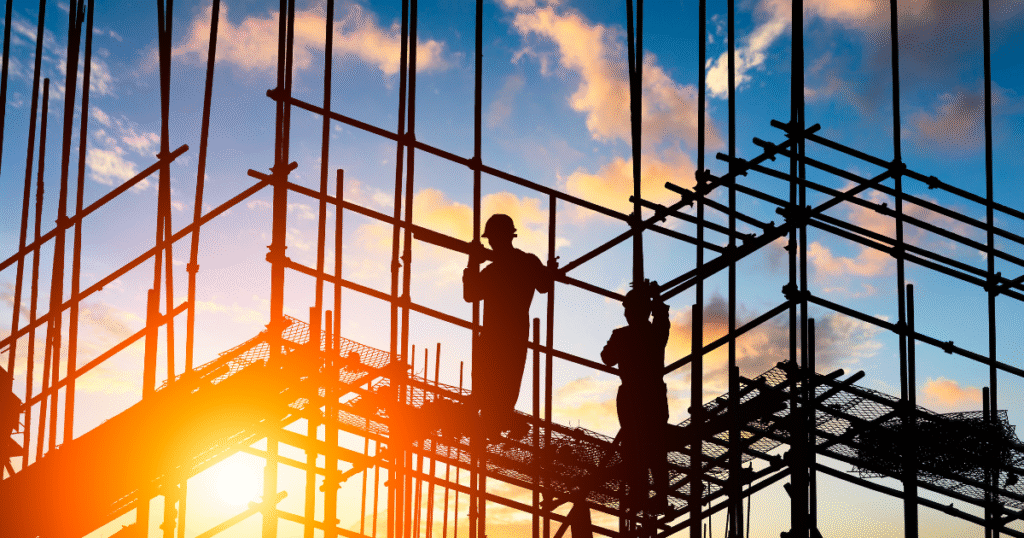
One of the key factors in progress is effective urban development. In addition, one of the signs of great urbanization is infrastructure and buildings. Skyscrapers, office buildings, schools, hospitals, and paved roads—these are what people think of when they picture progress. The Asia-Pacific (APAC) region is home to many megacities and fast-rising countries. However, with progress comes emissions. Reports indicate that the construction industry alone accounts for 37% of the world’s emissions. While we cannot halt progress, we should prioritize promoting net-zero construction in APAC, given the region’s mounting pressure to meet global climate goals.
More than half of the global population lives in the APAC region. Expectations indicate that the region’s urban population, currently at 2 billion, will surge to 3.3 billion by 2050. This increase creates demand for more buildings, condos, and houses in the city. However, it is pertinent to remember the Paris Agreement’s goal of decreasing global emissions by 45% by 2030 and achieving net zero by 2050.

Procurement experts are essential in driving this shift by using digital tools to increase efficiency and transparency and implementing sustainable sourcing methods. Procurement professionals may hasten the shift of the APAC construction industry to net-zero emissions by complying with regional regulations and embracing innovation.
An essential component of net-zero building is sustainable procurement. Construction projects can drastically lower their embodied carbon by giving procurement specialists priority over life-cycle analysis, renewable energy sources, and low-carbon materials. Changing to sustainable materials and circular economy concepts is crucial to reaching these goals, according to the Asian Development Bank.
Important legislative initiatives like carbon pricing schemes and green construction regulations can further strengthen this change. Strict green building regulations that require the use of sustainable materials and energy efficiency, for instance, along with incentives for the use of renewable energy sources, can also hasten the process. To monitor net-zero development, it is crucial to encourage accountability and openness by requiring construction businesses to provide carbon reports.
Using digital tools and cutting-edge technologies can help transform and innovate procurement. Utilizing these tools can also enable smarter and more sustainable construction. Blockchain, AI, and smart building systems are examples of emerging technologies that offer useful instruments for cutting emissions and enhancing resource management. Blockchain technology, for example, provides transparent tracking of items’ carbon footprints, guaranteeing supply chain adherence to sustainability goals.
Furthermore, it is essential to support the development of low-carbon materials, such as bio-based and recycled substitutes, and renewable energy sources, such as solar, wind, and geothermal power. Energy-efficient smart building solutions significantly improve efficiency.

Governments, the commercial sector, and research institutes have to collaborate to achieve net-zero construction in APAC. These public-private partnerships can accelerate innovation, and knowledge-sharing programs can equip industry professionals with best practices for sustainable construction.
Renovating and retrofitting old buildings is essential for increasing energy efficiency and lowering carbon emissions. Through life-cycle assessments, procurement specialists can find ways to lower embodied carbon for a building’s existence.
Reducing carbon emissions is just one advantage of sustainable building. Greater indoor conditions, such as greater air quality, natural lighting, and thermal comfort, are frequently offered by sustainable buildings, improving residents’ health and well-being. Additionally, by encouraging resource efficiency—such as using less energy and water—these policies lessen their negative effects on the environment.
In terms of the economy, sustainable building promotes innovation, creates jobs, and lowers long-term costs. In addition to drawing in renters and buyers who appreciate sustainability, green buildings frequently fetch greater property values. Because of these elements, sustainable building is both an economic opportunity and an environmental need.